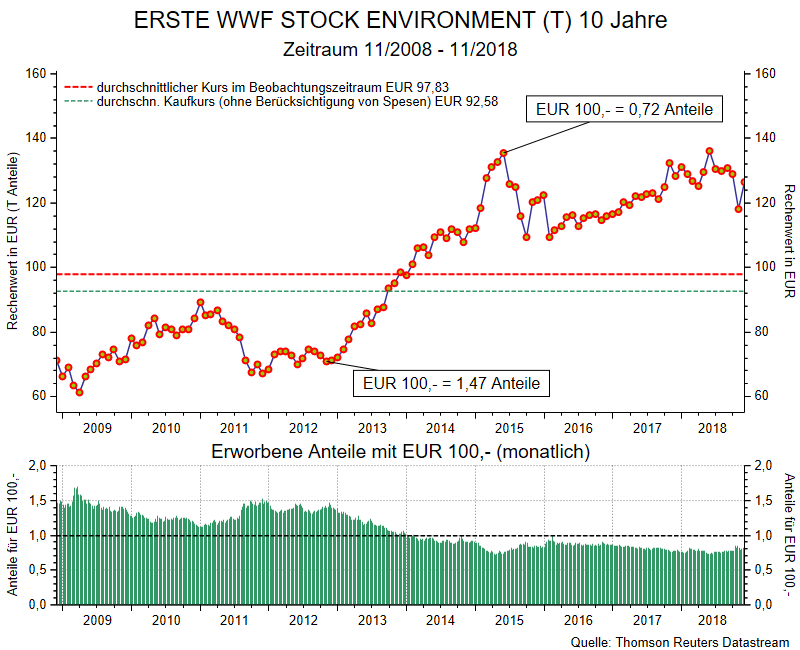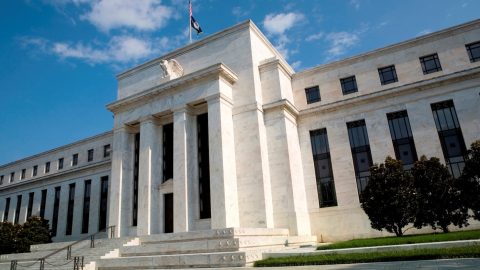The positive reaction to the agreement between the USA and China on not further escalating the trade conflict for the time being was only short-lived. Risky assets remain under pressure. A number of factors continue to burden the markets.
Trade conflict: agreement still only temporary
President Trump and the Chinese President, Xi Jinping, reached an agreement at the G20 meeting in Buenos Aires not to raise tariffs any further. There will be ongoing negotiations concerning new trade relations for the duration of 90 days. The chances of a definitive agreement are slim, given that the US balance of trade deficit with China will remain big, and the often-criticised practices pursued by China such as forced transfer of know-how and public subsidies will remain in place. Also, the structural ascent of China on an economic, political, and military level means the shift from a unipolar to a multipolar system. China is trying to overcome the attempts at containment from the USA. The two countries are of course rivals.
Weakening growth
Real global economic growth has already fallen from 3.8% (q/q, annualised) in Q3 2017 to 2.8% in Q3 2018. (Source: Bloomberg/Erste AM) Several economic indicators are suggesting that this trend will continue. Of relevance are the following ones:
Flat yield curve in the USA.
The differential between the 10Y and the 3M interest rate in the USA has shrunk significantly (currently 0.49 percentage points). Generally speaking, whenever the rates at the short end of the curve were higher than the ones at the long end (“inverted yield curve”) in the past, a recession would follow.
Negative credit impulse in China.
Credit growth in China is falling. If the change in credit volume is below nominal economic growth, the momentum produced by credit is negative. This means that the credit environment is depressing economic activity.

Two political aspects countered these negative factors.
US central bank turning more cautious
In the USA, some central bank members reduced interest hike expectations with their commentary on market prices. At this point, less than a full hike is priced in for 2019 after the generally expected increase of 0.25 percentage points to 2.25-2.50% in December.
At its core, this is all about the question of the neutral key-lending rate. That level has neither a dampening nor supporting effect on the economy. The catch is that this rate cannot be estimated precisely. A political error such as excessive rate hikes that trigger a recession are therefore a substantial risk. Last week, some central bank members pointed out that the lower end of the bandwidth of neutral rate estimates will soon be reached (dovish tone). This is probably based on the assumption that some interest-sensitive sectors such as the private real estate market have shown signs of weakness and market developments such as the flattening of the yield curve (see above), the widening of the credit spreads, and the outperformance by defensive sectors on the equity markets suggest a downturn.
The US central bank can only remain cautious as long as inflation is not rising. In fact, inflation rates will be falling in the coming months due to the fallen oil prices. While the inflation on goods is also receding globally, the increase in wage inflation continues to indicate upside risks in the underlying inflation.
Expansive fiscal policies.
The budget deficits being expanded in particular in the USA and in China. This comes with a mildly supporting effect on global economic growth.
Summary
The suspension of further tariff increases by the USA on Chinese imports, the cautious statements from the US Fed, and the expansive fiscal policies are supporting the economy and the markets. Risks like a further escalation of the trade conflict, a further weakening of global economic growth (especially in China), and drastic rate hikes by the Fed due to higher inflation are dampening the upward potential of risky asset classes.
Disclaimer:
Forecasts are not a reliable indicator for future developments.
Legal disclaimer
This document is an advertisement. Unless indicated otherwise, source: Erste Asset Management GmbH. The language of communication of the sales offices is German and the languages of communication of the Management Company also include English.
The prospectus for UCITS funds (including any amendments) is prepared and published in accordance with the provisions of the InvFG 2011 as amended. Information for Investors pursuant to § 21 AIFMG is prepared for the alternative investment funds (AIF) administered by Erste Asset Management GmbH pursuant to the provisions of the AIFMG in conjunction with the InvFG 2011.
The currently valid versions of the prospectus, the Information for Investors pursuant to § 21 AIFMG, and the key information document can be found on the website www.erste-am.com under “Mandatory publications” and can be obtained free of charge by interested investors at the offices of the Management Company and at the offices of the depositary bank. The exact date of the most recent publication of the prospectus, the languages in which the fund prospectus or the Information for Investors pursuant to Art 21 AIFMG and the key information document are available, and any other locations where the documents can be obtained are indicated on the website www.erste-am.com. A summary of the investor rights is available in German and English on the website www.erste-am.com/investor-rights and can also be obtained from the Management Company.
The Management Company can decide to suspend the provisions it has taken for the sale of unit certificates in other countries in accordance with the regulatory requirements.
Note: You are about to purchase a product that may be difficult to understand. We recommend that you read the indicated fund documents before making an investment decision. In addition to the locations listed above, you can obtain these documents free of charge at the offices of the referring Sparkassen bank and the offices of Erste Bank der oesterreichischen Sparkassen AG. You can also access these documents electronically at www.erste-am.com.
Our analyses and conclusions are general in nature and do not take into account the individual characteristics of our investors in terms of earnings, taxation, experience and knowledge, investment objective, financial position, capacity for loss, and risk tolerance. Past performance is not a reliable indicator of the future performance of a fund.
Please note: Investments in securities entail risks in addition to the opportunities presented here. The value of units and their earnings can rise and fall. Changes in exchange rates can also have a positive or negative effect on the value of an investment. For this reason, you may receive less than your originally invested amount when you redeem your units. Persons who are interested in purchasing units in investment funds are advised to read the current fund prospectus(es) and the Information for Investors pursuant to § 21 AIFMG, especially the risk notices they contain, before making an investment decision. If the fund currency is different than the investor’s home currency, changes in the relevant exchange rate can positively or negatively influence the value of the investment and the amount of the costs associated with the fund in the home currency.
We are not permitted to directly or indirectly offer, sell, transfer, or deliver this financial product to natural or legal persons whose place of residence or domicile is located in a country where this is legally prohibited. In this case, we may not provide any product information, either.
Please consult the corresponding information in the fund prospectus and the Information for Investors pursuant to § 21 AIFMG for restrictions on the sale of the fund to American or Russian citizens.
It is expressly noted that this communication does not provide any investment recommendations, but only expresses our current market assessment. Thus, this communication is not a substitute for investment advice.
This document does not represent a sales activity of the Management Company and therefore may not be construed as an offer for the purchase or sale of financial or investment instruments.
Erste Asset Management GmbH is affiliated with the Erste Bank and austrian Sparkassen banks.
Please also read the “Information about us and our securities services” published by your bank.



